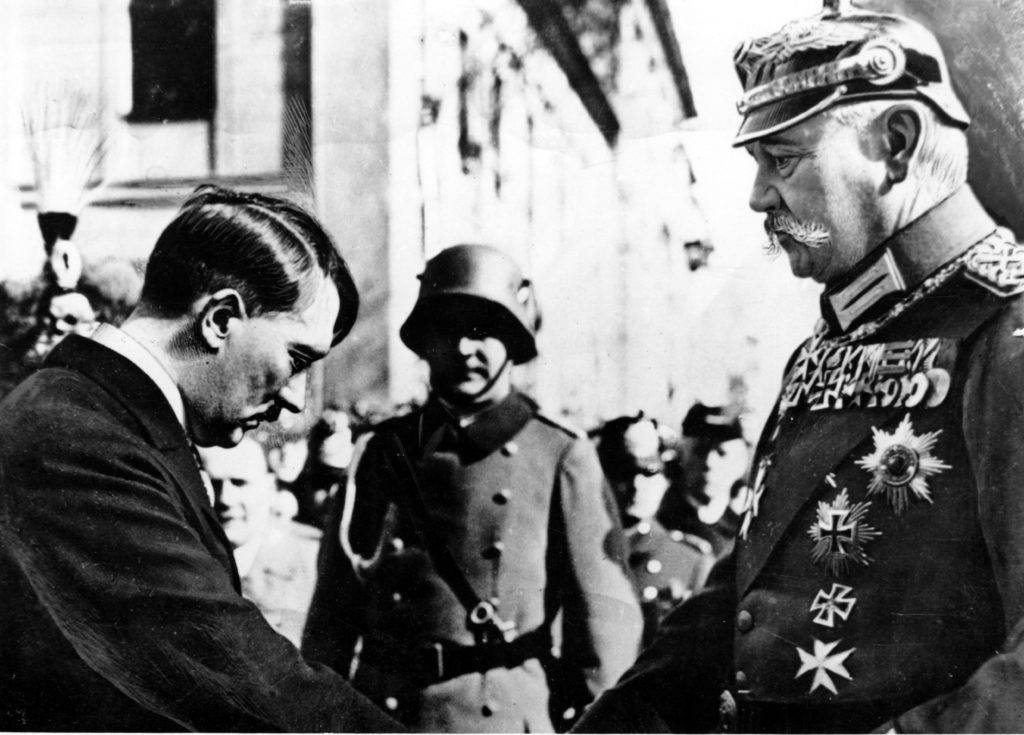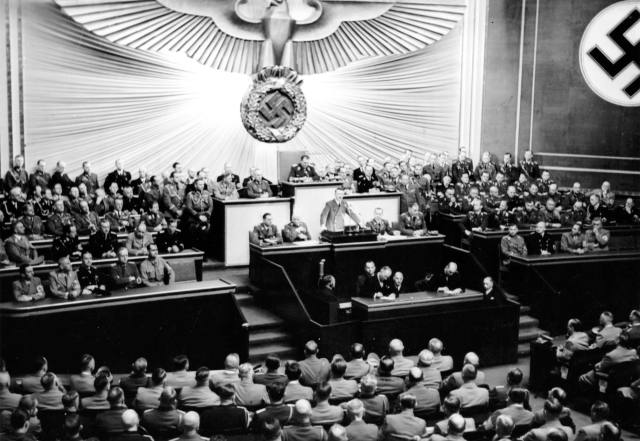
The Nazis always stressed that they were an unstoppable movement, different from the parties in the Weimar “system”. Weimar, they suggested, was inorganic and mechanical, an alien intrusion into a more spiritual and race-driven German history based on the deeds of great men.
Their extremist sect, led by a stateless foreigner with a criminal record – Hitler was only naturalised in 1932 after giving up his Austrian citizenship in 1925 – succeeded in diverting several tributary streams into a fast flowing torrent. Acting in its favour was the fact it also had the religiosity of a cult, as many clergy eagerly acknowledged.
But the Nazi’s electoral history during those crucial four or five years before the dictatorship was declared was far more volatile than this metaphor suggests.
For like any political party, the Nazis suffered loss of momentum, diminishing ticket sales for meetings, falling party newspaper circulations, an exodus of members, and splits and schisms. The leader of a putative Nazi left, Gregor Strasser, even presumed to challenge the rattled Führer. The super-confident Hitler had his moments of black despair, up to and including threats to shoot himself, and many highly informed commentators believed he and his party were an evanescent busted flush.
It was against the backdrop of economic chaos caused by the crash in 1929 that the Nazis first managed to make an impact. Their vote rose from 2.6% in 1928, to 18.25% in 1930, and then 37.27% in the first of two elections (in July) 1932. In the second poll of that year (in November), though, they lost 34 parliamentary seats and their vote fell to 33.09% of the whole. And even when they could deploy the powers of the state to influence the last semi-free election, in March 1933, it is worth noting that nearly sixty per cent of Germans did not vote for them.
So who did? The single greatest common denominator was middle-class, small-town and rural Protestants in northern Germany who detested the ostentatious immorality of Berlin and other major cities. The only major Catholic exceptions to this rule were the Palatinate and Silesia where bad blood with France and Poland weakened their immune systems. Over time, the Nazis would tack Left to pick up some working-class support, and Right, to lure the upper classes, but that core vote remained.
These people lacked a dedicated confessional party analogous to the Catholic Centre, and equally resented how their lives were dictated by corporate big business and organised labour. They could not understand Germany’s defeat, in the First World War, and bitterly resented the ‘Diktat’ imposed at Versailles. Many of them were convinced that only the machinations of international Jewry could explain this existential catastrophe.
While the urban working-class vote was split between Social Democrats and Communists, the ‘bourgeoisie’ supported either liberal or reactionary parties. Unfortunately, in the wake of the hyperinflation of the early 1920s, the liberal vote deliquesced into a host of single-issue pop-up parties obsessed with protecting sound money and savings, and then fell further into the arms of the Nazis.
Many upper-class cosmopolitan reactionaries discovered their inner German, especially after the Nazis created their own elite formation – the SS – which went out of its way to recruit titled people who rode horses.[1. The best books on Nazi voters are Jürgen Falter, Hitlers Wähler (Munich 1991) and Thomas Childers, The Nazi Voter. The Social Foundations of Fascism in Germany 1919-1933 (Chapel Hill 1985)]
But having forsaken the putsch path to power in favour of a combination of ballot, bullet and boot, Hitler could not achieve a majority of seats in the Reichstag, where his deputies disrupted orderly proceedings on a daily basis, under presiding officer Hermann Goring from July 1932 onwards.
Unfortunately, the constitution also included an ersatz monarch, President of the German Reich. This, in 1925, was Field Marshal Paul von Hindenburg who actually sought the approval of the exiled Kaiser before standing for office. He was re-elected in March 1932, beating Hitler in the second round run-off by 53% to 36%. There was no love lost between them. The old man regarded Hitler as that ‘Austrian corporal’ while Hindenburg bore an uncanny resemblance to Hitler’s much-hated father.

The onset of the Depression led to a shift to presidential government, which was within the letter rather than the spirit of the constitution. Hindenburg assumed the right to nominate chancellors who could then govern by presidential emergency decree.
In a classic illustration of the unfitness of old soldiers for high office, at the prompting of his camarilla, Hindenburg arbitrarily dismissed Heinrich Bruning, after his two-year attempt at deflationary policies had merely exacerbated Germany’s crisis.
He was replaced by a vain and devious aristocrat Franz von Papen, the choice of Germany’s would-be military strongman, General Kurt von Schleicher, defence minister. Papen lasted six months. After falling out over the direction of economic policy, Schleicher engineered Papen’s ousting, assuming the chancellorship himself.
The problem was that Germany’s would-be military strongman – memorably described by Trotsky as ‘a question mark with epaulettes’ – was not as steely as Franco. He had also made a key enemy.
Having struck a secret bargain with Hitler, which led Papen to imagine that Hitler would allow himself to be boxed in by a cabinet of conservatives, Papen successfully turned Hindenburg against Schleicher. Fatefully, the general lacked the resolve to impose a military-backed autocracy that might well have proved repressive but also temporary.[2. This argument is made by Henry Ashby Turner, Hitler’s Thirty Days to Power: January 1933 (London 1996)]
The actual process of Hitler becoming German chancellor from 30th January 1933 onwards had less to do with elections than with a frenzy of meetings between Hitler and his paladins and those closest to Hindenburg. The latter reluctantly concluded that there was no alternative to making this appointment after being reassured that Hitler had been merely ‘hired’ by Papen and other conservatives who had him ‘framed’.
All Hitler had to do was to sell their policies to the electorate. In reality, despite there being only three Nazis in a 12-man cabinet, Hitler deftly exploited a mood of extreme crisis – symbolised by the burning of the Reichstag – to introduce an Enabling Law in March 1933 which gave him the right to bypass parliament in perpetuity.
Political opponents disappeared into concentration camps, and several of those who had crossed him – including Gregor Strasser and Kurt von Schleicher – were murdered in the course of a purge that was presented in the guise of moral restoration.[3. For useful documents see Jeremy Noakes and Geoffrey Pridham, Nazism 1919-1945. A Documentary Reader vol 1 The Rise to Power 1919-34
(Exeter 1983)]
What the Nazis depicted as an ineluctable drive towards national regeneration in fact consisted of advances and setbacks, all condensed within four or five years amid one of the most acute crises to afflict a modern society.
For sure, how people voted was a major part of this, but the end-run to total power almost entirely depended on decisions by a handful of elite figures who calculated that they could ride this particular populist tiger. They couldn’t and something like 32 million people died in the European theatres of the war that Hitler brought about.










Join the discussion
Join like minded readers that support our journalism by becoming a paid subscriber
To join the discussion in the comments, become a paid subscriber.
Join like minded readers that support our journalism, read unlimited articles and enjoy other subscriber-only benefits.
Subscribe